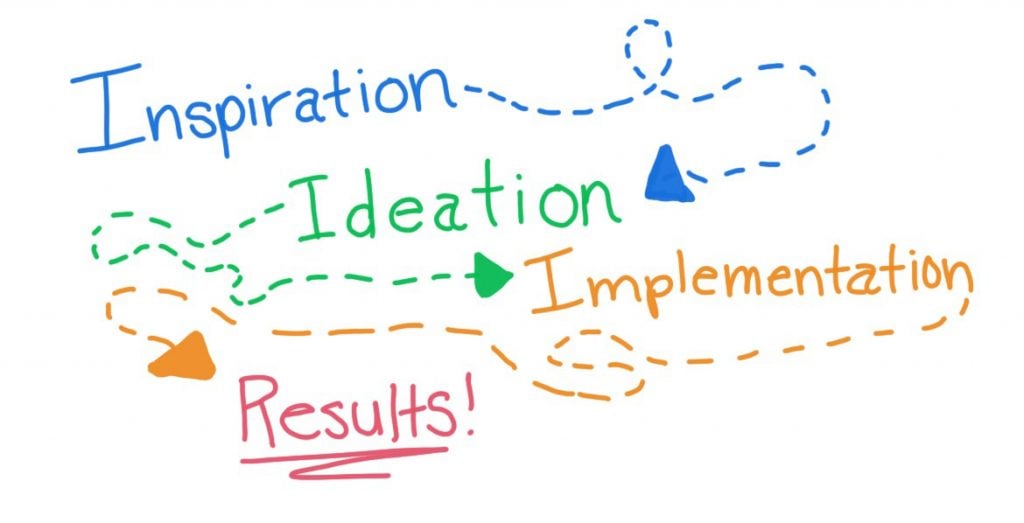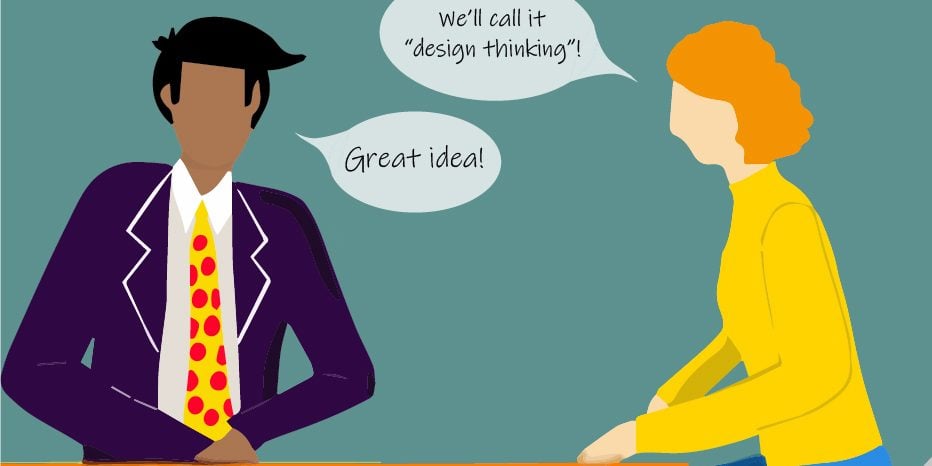Written and illustrated by Connor Johns, graphic design intern at StriveTogether.
In the past 15-20 years, we have heard the words “innovation” and “design thinking” thrown around a lot in the corporate world. But what do these words really mean? How do they work in the nonprofit field? I’m a graphic designer and did not understand what these phrases meant when I joined StriveTogether in January for an internship. I have always been told that design starts with a concept and ends as an object or something visual — there is a finished piece of work at the end.
My thoughts on design thinking shifted recently when I took part in a panel discussion at the University of Cincinnati, where I am a student majoring in fine arts and focusing on graphic design. Comments from some participants gave a new perspective to my time at StriveTogether. The work of graphic designers is not limited to the products they create while sitting at a computer. All designers are creative problem solvers who provide or improve an experience for a user. StriveTogether supports the success of every child by providing technical assistance, resources, tools and proven processes. But I know what you may be wondering: How exactly does this national nonprofit organization act as a design team?

Here’s how it works: Communities join the StriveTogether Cradle to Career Network to get better results for kids. StriveTogether then works with those communities to find and refine solutions to the problems they are facing. StriveTogether also convenes communities to share stories of success. Learning from each other, communities develop strategies and best practices specific to their local needs. This collaboration leads to the Network Effect, which closes disparity gaps and helps create equitable outcomes for every child.
The StriveTogether approach began as an idea inspired by the inequities faced by kids in the U.S. education system. This idea was tested, refined and shared with others, where it was then tested and refined again — growing wider and deeper in scale until it was proven to work in a variety of contexts. Now, challenges and obstacles in nearly 70 communities across the country are being solved in creative and innovative ways.
No, the StriveTogether approach does not produce a singular packaged product for the user and will inevitably continue to evolve, but it is still based in design methodology. In this case, the problems are systems that create disparity gaps and the users are every child in the Cradle to Career Network.

I have come to learn through working at this organization that I am not a designer for a nonprofit. I am a designer for a national movement to get better results for kids, working on a team where every single member is a designer.
Blog post by Connor Johns, who served as the graphic design intern at StriveTogether from January to May in 2019. Connor is a senior at the University of Cincinnati studying fine arts, art history and psychology.





